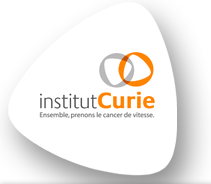FLASH and minibeams in radiation therapy: the effect of microstructures on time and space and their potential application to protontherapy
Résumé
After years of lethargy, studies on two non-conventional microstructures in time and space of the beams used in radiation therapy are enjoying a huge revival. The first effect called “FLASH” is based on very high dose-rate irradiation (pulse amplitude ≥106 Gy/s), short beam-on times (≤100 ms) and large single doses (≥10 Gy) as experimental parameters established so far to give biological and potential clinical effects. The second effect relies on the use of arrays of minibeams (e.g., 0.5–1 mm, spaced 1–3.5 mm). Both approaches have been shown to protect healthy tissues as an endpoint that must be clearly specified and could be combined with each other (e.g., minibeams under FLASH conditions). FLASH depends on the presence of oxygen and could proceed from the chemistry of peroxyradicals and a reduced incidence on DNA and membrane damage. Minibeams action could be based on abscopal effects, cell signalling and/or migration of cells between “valleys and hills” present in the non-uniform irradiation field as well as faster repair of vascular damage. Both effects are expected to maintain intact the tumour control probability and might even preserve antitumoural immunological reactions. FLASH in vivo experiments involving Zebrafish, mice, pig and cats have been done with electron beams, while minibeams are an intermediate approach between X-GRID and synchrotron X-ray microbeams radiation. Both have an excellent rationale to converge and be applied with proton beams, combining focusing properties and high dose rates in the beam path of pencil beams, and the inherent advantage of a controlled limited range. A first treatment with electron FLASH (cutaneous lymphoma) has recently been achieved, but clinical trials have neither been presented for FLASH with protons, nor under the minibeam conditions. Better understanding of physical, chemical and biological mechanisms of both effects is essential to optimize the technical developments and devise clinical trials.
